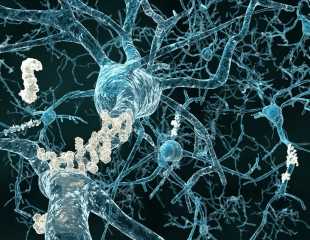- Researchers say weather and temperature seem to have little impact on transmission of the novel coronavirus that causes COVID-19.
- They say human behavior such as mask wearing and physical distancing are much better factors.
- They note that adhering to these safe practices can reduce COVID-19 transmission as well as risk of the flu.
Hot weather. Cold weather. COVID-19 doesn’t care.
Researchers at the University of Texas at Austin say the novel coronavirus spreads with about the same efficiency regardless of air temperature and humidity.
“The effect of weather is low and other features such as mobility have more impact than weather,” said Dev Niyogi, PhD, a professor at UT Austin’s Jackson School of Geosciences and Cockrell School of Engineering who led the research. “In terms of relative importance, weather is one of the last parameters.”
In April 2020, the U.S. Department of Homeland Security issued a report suggesting that increased summer temperatures, humidity, and sunlight could present a barrier to COVID-19 transmission.
“Maybe this goes away with heat and light. It seems like that’s the case,” President Donald Trump said at the time.
The new research runs counter to that speculation.
“Temperature and humidity is not much of a factor,” Niyogi told Healthline.
Human behavior, researchers said, remains the biggest factor in the spread of COVID-19.
Simply put, when it’s warm out, people spend more time outside, where disease transmission is limited.
When it gets cold out, people spend more time indoors together, where COVID-19 transmission risk is higher.
“It’s not what the temperature does, it’s what the temperature makes people do,” Dr. Aaron Glatt, chair of the department of medicine at Mount Sinai South Nassau Hospital in New York and the hospital’s lead epidemiologist and infectious diseases chief, told Healthline.
“The critical factor is when people are in an indoor space that’s poorly ventilated, there’s going to be a higher risk of infection. That’s the case with any respiratory illness, not just COVID,” he said.
Glatt noted that weather does sometimes play a role in illness prevalence. Waterborne illnesses, for example, tend to be more common in summer, when people are swimming more. Likewise, transmission of illnesses by mosquitos like the West Nile virus also peak in the warmer months.
As for COVID-19, however, the temperature doesn’t seem to matter.
“Weather by itself does not have a correlation with transmission, as evidenced by the fact that we have seen this virus be just as ominous both during the winter and summer months, not just in the U.S. but also all over the world,” Dr. Nikhil Agarwal, an internal medicine specialist at WellMed in Cedar Park, Texas, told Healthline.
What researchers uncovered
The recent study published in the International Journal of Environmental Research and Public Health used a combination of weather information and data on human movement and behaviors (including mask wearing) to estimate the degree to which temperature and humidity influenced COVID-19 spread.
They concluded that the relative importance of weather on disease transmission at the county level was just 3 percent, compared to 34 percent for taking trips, 26 percent for spending time away from home, 23 percent for population, and 13 percent for urban density.
“While some effects due to weather may exist, we found possible misconceptions and biases in the analysis that only consider the impact of meteorological variables alone without considering the urban metabolism and environment,” the authors concluded.
“We shouldn’t think of the problem as something driven by weather and climate,” said Maryam Baniasad, a doctoral candidate at The Ohio State University and a study co-author. “We should take personal precautions, be aware of the factors in urban exposure.”
Glatt said that physical distancing and mask wearing can not only prevent COVID-19 but transmission of other diseases, noting that Australia has seen a reduction in flu cases this year as a result of its strict coronavirus protocols.
With the holiday season approaching, Glatt recommended that people bundle up and have their turkey dinners outside, or eat in small groups and then invite family over for a briefer period of masked socializing — or just do their family gatherings via Zoom.
“Not every place in the U.S. is cold at Thanksgiving,” said Glatt. “Being outdoors with a jacket on when it’s 50 degrees out is better than bringing people indoors and raising their risk. The atmosphere is the best ventilation we have.”
“The behavior and practices that worked well for summer should also work effectively for winter months,” said Niyogi. “The risks are higher in urban dense regions, with high social interaction, and lack of social distance protocols.”

Source: Read Full Article


